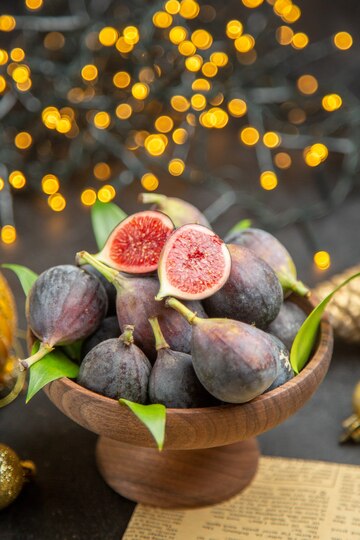Introduction to figù
Have you recently come across the term “figù” and wondered what it is? Maybe you’ve heard friends rave about it or seen it featured in a trending recipe. Figù—an ancient fruit with a rich history—has been celebrated in many cultures for centuries. This post will take you on a delightful exploration of its origins, health benefits, culinary uses, and even its role in pop culture. By the end, you’ll understand why figù is gaining renewed popularity and how you can incorporate it into your own life.
The Rich History of Figù
Ancient Beginnings
The figù has roots that trace back thousands of years. Originating in the Mediterranean, this fruit was a staple in ancient diets and a symbol in religious and cultural ceremonies. Ancient Greeks and Romans celebrated figù for its sweetness and versatility, using it in various dishes and even as a form of currency in some places.
Figù in World Cultures
Over time, figù spread across continents, finding a place in the culinary traditions of Middle Eastern, Asian, and even Western cuisines. Each culture developed unique ways to integrate figù into their diets, from fresh salads to dried snacks. This global appreciation showcases the fruit’s adaptability and enduring appeal.
Modern Renaissance
Today, figù is experiencing a resurgence in popularity. With an increased focus on health and sustainable eating, more people are rediscovering figù’s myriad benefits. Modern chefs and home cooks alike are incorporating it into innovative recipes, celebrating its rich flavor and nutritional profile.
The Health Benefits of Figù
Nutritional Powerhouse
Figù is not just delicious; it’s also packed with essential nutrients. Rich in vitamins A, B, and K, and minerals like magnesium, potassium, and iron, figù supports overall health. It’s also a good source of dietary fiber, promoting digestive health and keeping you feeling full longer.
Antioxidant-Rich
One of the standout features of figù is its high antioxidant content. These antioxidants help combat oxidative stress in the body, reducing the risk of chronic diseases such as heart disease and cancer. Regular consumption of figù can be a simple way to boost your antioxidant intake and protect your health.
Supporting Heart Health
Figù’s high potassium levels aid in maintaining healthy blood pressure, while its fiber content helps lower cholesterol levels. Together, these benefits contribute to a healthier heart. Studies have shown that incorporating figù into your diet can improve cardiovascular health, making it a heart-friendly choice.
Culinary Uses and Recipes
Versatile Ingredient
Figù can be used in a variety of dishes, from sweet to savory. Its natural sweetness makes it a perfect addition to desserts, while its rich texture pairs well with meats and cheeses. Whether fresh or dried, figù can enhance the flavor of many meals.
Easy Recipes
Here are a few simple recipes to get you started with figù:
- Fresh Figù Salad: Combine fresh figù slices with arugula, goat cheese, and a balsamic glaze for a refreshing starter.
- Figù Jam: Simmer chopped figù with sugar and lemon juice until thickened for a delicious spread on toast or crackers.
- Grilled Figù and Chicken: Marinate chicken breasts in olive oil and herbs, then grill alongside halved figù for a flavorful main course.
Baking with Figù
Don’t forget about baking! Figù can be incorporated into cakes, muffins, and bread, adding a unique sweetness and moist texture. Try adding chopped figù to your favorite muffin recipe or creating a figù tart for a delightful dessert.
Sustainability and Ethical Sourcing

Importance of Sustainability
With growing awareness of environmental issues, sustainable figù production is more important than ever. Sustainable practices ensure that figù is grown in a way that protects the environment and supports local communities. This includes methods like organic farming, water conservation, and fair labor practices.
Ethical Sourcing Practices
When buying figù, look for brands that prioritize ethical sourcing. This means ensuring that farmers are paid fairly for their work and that production processes do not harm the environment. Supporting such brands helps promote a more sustainable and equitable food system.
Making Conscious Choices
By choosing sustainably sourced figù, consumers can make a positive impact. Not only does this support ethical practices, but it also ensures the long-term availability of this precious fruit. Look for certifications like Fair Trade or Organic to guide your purchases.
Figù in Pop Culture
Figù in Art and Literature
Figù has made its mark in various forms of art and literature. From ancient frescoes to modern novels, it has been depicted as a symbol of abundance, fertility, and sweetness. Artists and writers have long been inspired by its beauty and significance, making it a recurring motif in creative works.
Figù in Media
In recent years, figù has also found its way into media and pop culture. Cooking shows, food blogs, and social media influencers have highlighted figù in their content, introducing it to a broader audience. This exposure has contributed to its growing popularity and recognition.
Celebrity Endorsements
Even celebrities are getting on board with figù. Many health-conscious stars have touted its benefits, sharing their favorite figù recipes and encouraging fans to give it a try. This celebrity endorsement has further solidified figù’s trendy status.
Conclusion
Figù is more than just a fruit; it’s a cultural icon, a nutritional powerhouse, and a versatile ingredient. Its rich history, numerous health benefits, and diverse culinary uses make it a valuable addition to any diet. By choosing sustainably sourced figù, you can enjoy its deliciousness while supporting ethical practices.


